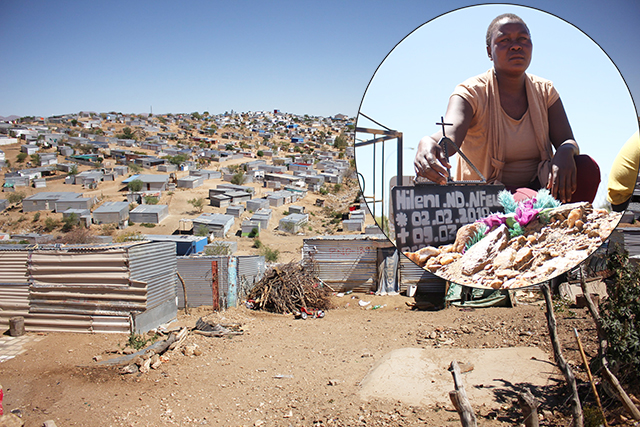FOR months it had been a subject of whisper and spoken about in hushed tones. Hepatitis E was other people’s reality, and Alfeaus Sheefeni never thought the deadly virus would touch him or his family.
This was until he looked into his wife’s eyes and asked her “why are your eyes so yellow?”
“Hepatitis E nearly killed my whole family,” Sheefeni told last week.
His wife, Johanna Imbondi Sheefeni, was six months pregnant when she was diagnosed with the virus on 1 February at Katutura Intermediate Hospital.
“They immediately induced me into labour and the baby was born on 2 February and put into an incubator. I was kept away from her… the only person who could see her was her father. We were later transferred to Windhoek State Hospital,” she said.
The baby girl, however, died in March.
“It was not a good feeling. I felt I was not a good mother at all,” Imbondi (30) said.
The couple has two surviving children, a three-year-old and a one-year-old.
Sheefeni (35) and his family are among the estimated 9 519 people living in Brendan Simbwaye location in one of Windhoek most impoverished informal settlements, Havana, named after the capital city of Cuba.
As you approach Havana, you are met by thousands of corrugated zinc shacks. The laughter of mostly women and children fill the air; some women are doing each other’s hair, others are doing laundry.
When The Namibian arrived at Sheefeni’s shack, Wilson Phillips’ hit song ‘Release Me’ was playing on a small radio inside.
Imbondi was preparing a meal for the family on an open fireplace outside.
After welcoming the team, Sheefeni recalled how his family’s lives had changed overnight.
“We were so sick that when one was released from the hospital, the other went in,” he recounted. He added that at one point, they thought it was a result of witchcraft.
Life was good until the virus struck down all five members of his family, he said.
“We lost five neighbours. A few houses from ours, an elderly couple died; just down the road, two young women and a child died. These are just people close to my house. But when you walk down the road every day, you hear of a death caused by the virus,” he said.
This scares him. He also feels not enough is being done by authorities to deal with the situation.
“Especially in our area. If you come here most of the kambashus (shacks) are locked, not because people are at work, but because they died of this virus. You don’t see toilets or clean water points here,” he added.
Hepatitis E thrives in filth.
Sheefeni and his wife are unemployed and cannot afford items like soap to wash hands regularly. “But as a mother, I try my best to make sure they drink clean water, and I get those chemicals at the clinic to put in the water for drinking,” Imbondi said.
The government declared hepatitis E a national problem in September last year.
As of last month, there were around 3 835 suspected cases countrywide and at least 508 laboratory cases were confirmed, the health ministry said in a statement yesterday.
The majority – 2 657 – were reported in the Khomas region, followed by Erongo with 861 cases, Omusati with 127 and Oshana with 77.
The ministry said 33 deaths had been reported since 2017 of which 14 (45%) occurred among pregnant women.
Councillor Fanuel Shivute of the Samora Machel constituency – which includes Havana – said three areas in his constituency had been profoundly affected – the Branden Simbwaye, Peter Nanyemba and Kaxumba Kandola locations.
City of Windhoek spokesperson Lydia Amutenya said despite interventions, new cases were still being reported in these areas.
“There is a trend of cases reported fluctuating on a weekly basis (i.e. one case today and the next day they start picking up). Vandalism of municipal infrastructure put in place to respond to the outbreak continues,” she said.
In an age of information overload, Sunrise is The Namibian’s morning briefing, delivered at 6h00 from Monday to Friday. It offers a curated rundown of the most important stories from the past 24 hours – occasionally with a light, witty touch. It’s an essential way to stay informed. Subscribe and join our newsletter community.

The Namibian uses AI tools to assist with improved quality, accuracy and efficiency, while maintaining editorial oversight and journalistic integrity.
Stay informed with The Namibian – your source for credible journalism. Get in-depth reporting and opinions for
only N$85 a month. Invest in journalism, invest in democracy –
Subscribe Now!










